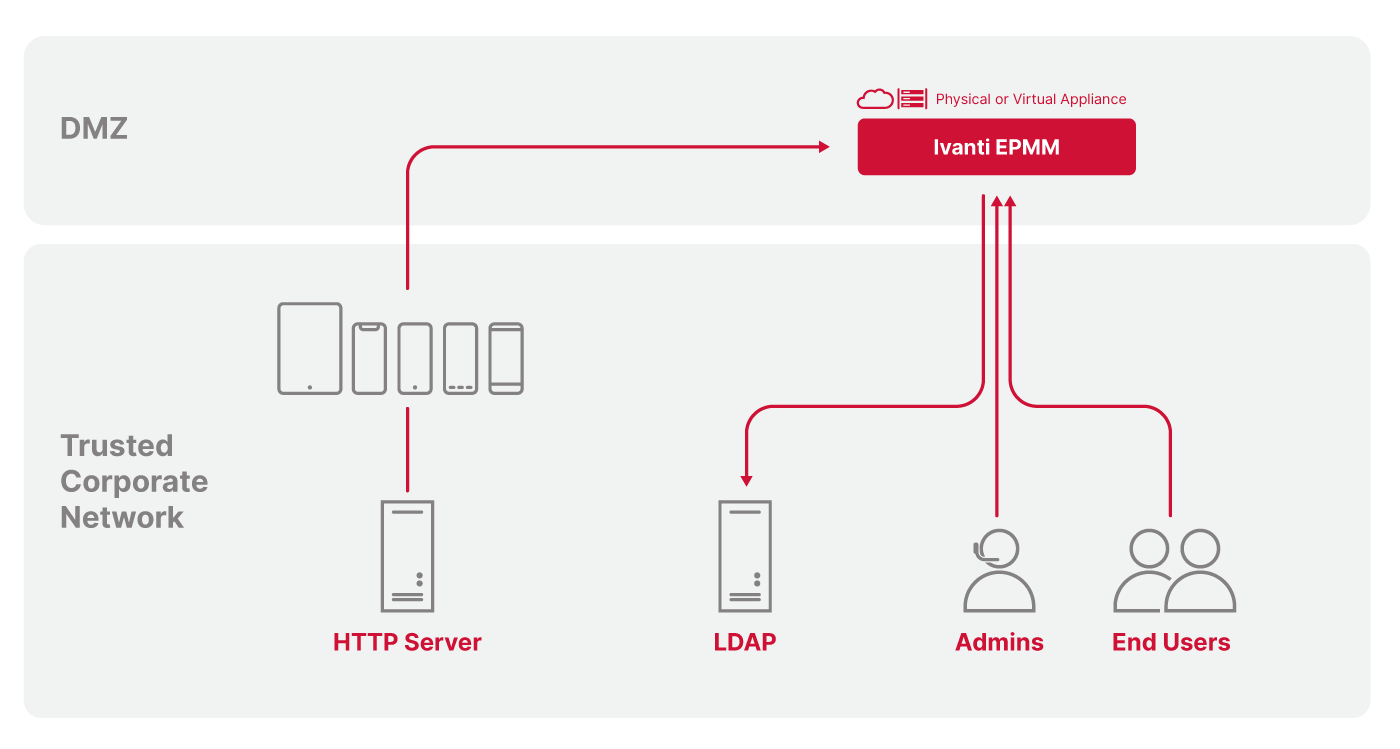Override for in-house app URLs
Ivanti EPMM supports an alternative for off-loading distribution of in-house apps to alternate HTTP servers. This option is intended only for those customers who meet all of the following criteria:
- Numerous internally-developed apps for distribution to thousands of devices
- A trusted and secure internal network
- Available HTTP servers
- Concerns about performance impact on Ivanti EPMM
- Ability to manually synchronize apps between Ivanti EPMM and an alternate location
This alternative enables you to specify an override URL, per app, to be used for in-house app distribution. Ivanti EPMM routes download requests to this alternate location. The following diagram illustrates a typical deployment.
Figure 1. Override for in-house app URLs

This feature uses unauthenticated URLs. Therefore, this feature is intended for use behind the firewall, using a trusted and secure internal network. The URL should use the HTTPS, not HTTP, URL scheme. However, the feature allows you to use the HTTP URL scheme. Before you use an HTTP URL, make sure you understand the risks of using an insecure connection.
This section includes the following sub-sections:
Implementing app source override in Ivanti EPMM
If you have the supporting infrastructure in place, complete the following steps to implement app source override:
- In Ivanti EPMM Admin Portal, go to Apps > App Catalog.
- Select the appropriate OS from the Platforms list.
- As you complete the forms in app wizard, include an appropriate URL in the Override URL field.
The URL must point to the in-house app in its alternate location.
If you are using the HTTP URL scheme, select Allow app downloads over insecure networks. Make sure you understand the risks of using insecure networks. - Finish adding the app and assign an appropriate label to the app.
Manual synchronization of apps for override URLs
Ivanti EPMM does not synchronize the apps configured in Apps@Work with those stored on the HTTP server in this override URL configuration. The administrator must perform this maintenance manually and develop a process for ensuring proper synchronization.